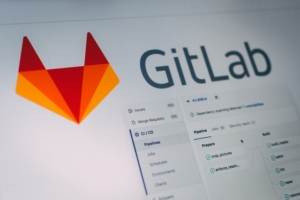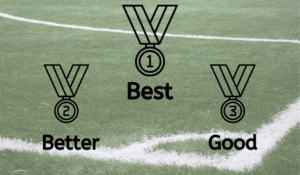GitLab’s Open Strategy model makes it hard to beat the company as a case study for learning about pricing strategy
July 2022
Author: Bryan Belanger
July 2022
Author: Bryan Belanger

We talk about GitLab a lot at XaaS Pricing. This is for good reason. We really like using vendor case studies to illustrate abstract pricing concepts, and we are staunch advocates for rigorous competitor and peer analysis in the development and management of pricing strategy. GitLab has adopted what it calls its “Open Strategy.” As part of this approach, the firm makes its strategy documents, employee handbooks, and other operating guidelines publicly available. This includes documentation on the firm’s pricing model and strategies.
This Open Strategy model makes it hard to beat GitLab as a case study for learning about pricing strategy. It’s not often that you get a view into both a company’s pricing strategy as well as the internal guidelines, processes, and cultural foundations that steer that pricing strategy. GitLab also merits case study status as a consistent high performer in B2B SaaS; in its June 2022 earnings release, the firm reported year-to-year revenue growth of 75% and dollar-based net revenue retention of 130%.
We highly recommend reading GitLab’s pricing model documentation end-to-end. It’s well worth the time. But since we’ve read and reread it many times at this point, we wanted to pull out our favorite 10 insights for your benefit. These span all elements of pricing strategy. In the rest of this post, we share excerpts from GitLab’s pricing strategy (GitLab’s verbatim quotes are in italics), along with our comments on why each is important, and how you might adopt them for your business.
“Pricing affects Product, Marketing, and Sales. Therefore, general pricing decisions are made by the CEO. Product makes most decisions on a day-to-day basis about what feature should go in what plan based on the paid tiers. The following table describes how large cross-functional pricing decisions should be made. This decision making method differs from our normal RADCIE method due to the extremely cross-functional nature and business risk of large pricing decisions.”
XaaS Pricing’s Takeaways: The importance of pricing as a multifunctional imperative is not lost on GitLab, and it has designed a unique committee structure and accountability processes to suit. It’s very important to GitLab that the CEO is the final arbiter of pricing strategy, even though the firm is generating $250 million in annual revenue.
“Understanding the distinction of our buyer-based model can be difficult. In it we focus not on the user of the feature, but on the buyer and in what cases a feature would be useful to that buyer even in cases where the buyer is not the user.”
XaaS Pricing’s Takeaways: This is a really key distinction: GitLab is a classic example of a user-focused product, but with its pricing strategy, the firm designs and segments packaging based on its economic buyers. Pricing is aligned to deliver value to those who are seeking to pay for that value, not just those who use the product. This can shape product decisions.
“We’ve found that bundling our features within tiers into themes resulted in improved conversion performance on our pricing page. While it is how we present the value of our tiers, this themes-based representation serves as an additive filter for, and is not a replace of, our Buyer Based Tiering decision.”
XaaS Pricing’s Takeaways: We love this one. Features are important. But it’s easy for vendors to lose sight of the big picture with pricing and positioning and quickly devolve into detailed feature-by-feature comparisons. GitLab addresses this by using higher-level “themes” to define features that equate to value for each product tier. Themes don’t supersede buyer-based tiering but, rather, support and reinforce this tiering approach, by defining major value creators for each tier.
“A 5x higher price doesn’t mean there is 5x more value, just like the Premium tier doesn’t provide infinitely more value than the gratis Free tier. When deciding between tiers, organizations should look at the ratio between how much extra value they get divided by how much extra they pay. If this ratio is comfortably above 1, it makes sense to move to a higher tier. The value is in making people more effective, saving time on integrating tools, driving faster time to value, and retiring other tools. This should more than pay for the increased price of a tier. An analogy would be Apple’s iPhone: it is twice as expensive as an average Android phone, and while it doesn’t deliver twice as much value, the extra value is worth the extra cost.”
XaaS Pricing’s Takeaways: We wrote in a past post about the 1x, 2.2x, 5x rule for defining relative pricing between product tiers. That “rule” is an interesting point of departure for setting up tiered pricing but shouldn’t be considered a replacement for a well-researched, customer-centered strategy. What GitLab provides above is the latter. GitLab even provides a framework for customers to analyze the relative value of different tiers when making purchase and upgrade decisions.
“Our price is 5x the on-demand cost of the clouds, so we have 80% margin. This seems to be what’s common in our market (for example: GitHub and CircleCI), but we’re open to other companies fact checking us with list prices. Here’s our long-term cost model which shows how this enables us to get a 20% profit margin.”
XaaS Pricing’s Takeaways: This one is interesting to us for a few reasons. There’s a through line that starts here on GitLab’s competitor and market focus in price setting, which we like. But it’s also interesting that pricing is set based off of cloud pricing. We expected GitLab’s pricing to be more centered on customer price testing and willingness to pay, but the firm seems to employ a more market-based pricing strategy.
“We simplify the pricing model for our customers whenever we can. For example, our pricing is one fee for storage, while the underlying repository might be on a Solid State Drive (SSD) or Hard Disk Drive (HDD) … A simplified pricing and packaging (PnP) strategy serves customers in the optimal way per the industry best practice. More SKUs lead to a more complex PnP model as a company scales, which eventually causes huge confusion to customers.”
XaaS Pricing’s Takeaways: Not much else to say on this one. Just straight facts from GitLab. In a recent study we conducted with PeerSignal.org, we analyzed 125 product-led growth (PLG) companies. We found that product complexity scaled almost linearly by product stage, with the most mature companies displaying the greatest product complexity. This included more products, add-ons, tiers, and volume tiers than their smaller and newer-to-market counterparts. Companies that were able to buck the complexity trend, such as Slack, benefited significantly in terms of growth and valuation.
“Almost all SaaS products show monthly pricing on their pricing pages. GitLab shows monthly pricing on our website and notes clearly that it is billed annually. This is also a standard practice followed by companies like Salesforce. We previously have tried showing annual pricing on the website, but repeatedly heard from customers that they were confused by it. They often thought our product was priced significantly higher than it actually was because they expected the pricing to be displayed in monthly units and read the annual price as though it were per month.”
XaaS Pricing’s Takeaways: This point hits at the core pricing presentation and psychology. As GitLab notes, it is standard in SaaS pricing to provide pricing in monthly terms, even if only annual terms and billing are offered. GitLab originally showed annual pricing on its website, but walked it back to monthly pricing after finding that annual pricing confused customers. Reflected here again is GitLab’s emphasis on market-based pricing strategy (GitLab cites Salesforce as inspiration).
“We currently charge 100% for users added during the year, because some organizations gave an intentionally too-low estimate when we charged 50%. If we technically can count ‘user days,’ we can make it fair for everyone, but we’re not sure if the technical and sales complexity is worth it.”
XaaS Pricing’s Takeaways: We haven’t touched a ton on true-ups and overage because it’s not often something that companies willingly discuss on their websites and other publicly available content, at least not at this level of detail. GitLab cuts through the ambiguity here and provides a clear approach to charging for additional users, as well as the rationale and experience that supported its decision.
“We understand that customers have choices when they decide to make a purchase. Hence, understanding the competitive landscape of our products is very critical. With respect to competition, we focus on the key differences between our value proposition and the competition’s value proposition. Our pricing aims to reflect the differential value that we provide.”
XaaS Pricing’s Takeaways: We couldn’t have said it better ourselves (even though we’ve tried). We talk a lot about the importance of competitive analysis in setting a pricing strategy. GitLab describes perfectly why competitive intelligence is critical to the firm’s pricing strategy — it’s all about clearly defining value proposition relative to a known set of alternatives.
“We will charge per user, per application, or per instance. We do include free minutes with our subscriptions and trials to make it easier for users to get started. As we look towards more deployment-related functionality on SaaS it’s tempting to offer compute and charge a percent on top of, for example, Google Cloud Platform (GCP). We don’t want to charge an ambiguous margin on top of another provider since this limits user choice and is not transparent. So we will always let you BYOK (bring your own Kubernetes) and never lock you into our infrastructure to charge you an opaque premium on those costs.”
XaaS Pricing’s Takeaways: This is a nice one to close on, as it points to the future. GitLab acknowledges that there are many potential futures for its pricing strategy. The model may change (per user, application, or instance), and as the use cases for the product evolve, the firm may be tempted to try other approaches to defining value. GitLab is keeping these options on the table, which encourages the firm to keep these options top of mind and continually test them and experiment with customers.
If you’re interested in future company deep dives like this one, Subscribe to receive content like today’s post as soon as it publishes. And if you have any questions or there’s something you’d like to see covered in a future post, contact me at [email protected].
 ©2022 XaaS Pricing. All rights reserved. Terms of Service | Website Maintained by Tidal Media Group
©2022 XaaS Pricing. All rights reserved. Terms of Service | Website Maintained by Tidal Media Group

 What we can learn from the world’s first SaaS pricing page
What we can learn from the world’s first SaaS pricing page